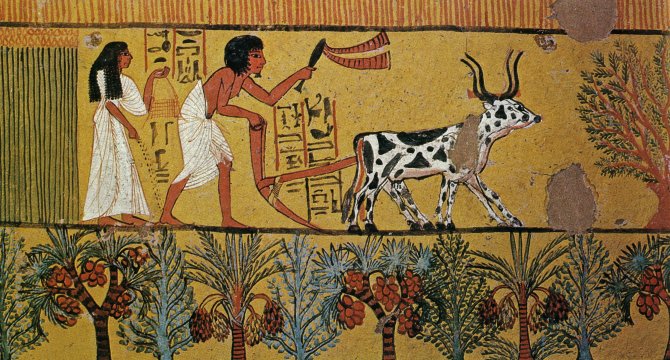|
John Tyman's Cultures in Context Series EGYPT and the SAHARA www.johntyman.com/sahara |
|
2.3 Egypt in the Time of the Pharaohs : 083-096 |
| . |
|
John Tyman's Cultures in Context Series EGYPT and the SAHARA www.johntyman.com/sahara |
|
2.3 Egypt in the Time of the Pharaohs : 083-096 |
| . |
 |
| .093. With the water’s retreat, the soft
black silts that remained were worked with wooden ploughs drawn by long-horned
cattle (according to tomb paintings), and seed was broadcast from baskets.
(Painting
in temple at Deir el-Medina, near Luxor courtesy Crystalinks.com
)
|

![]()
Text and photos by John Tyman
unless otherwise indicated.
Intended for Educational Use
Only.
Contact Dr. John Tyman at johntyman2@gmail.com
for more information regarding
licensing.
![]()
www.hillmanweb.com
Photo processing, Web page layout,
formatting and hosting by
William
Hillman ~ Brandon, Manitoba ~ Canada